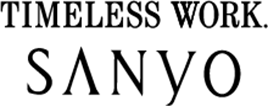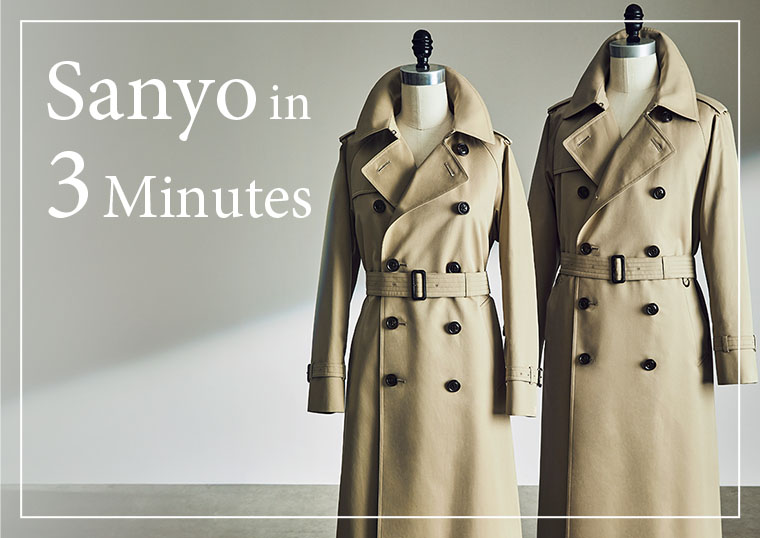History of Sanyo
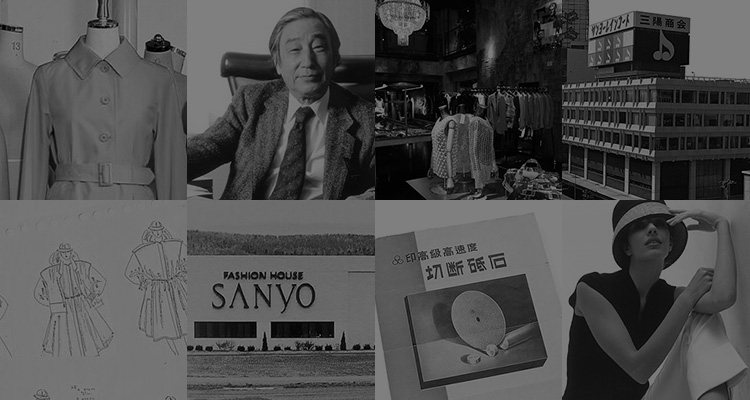
History of Sanyo Shokai
1943-1949
Started out as a seller of sharpening stones and released the very first coat after the war
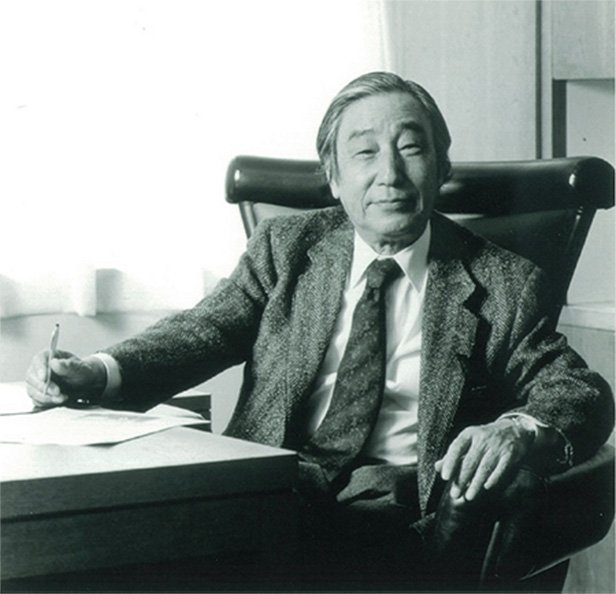
The history of Sanyo Shokai began in May of 1943 (Showa 18) during the war when founder Nobuyuki Yoshihara established the company in Tokyo as a seller of sharpening stones.
Given the scarcity of supplies after the war, he used available raw materials to create a variety of products in search of new business. In 1946, a gentleman's black raincoat was made using air-raid blackout curtains, which became Sanyo Shokai's very first coat. In 1947, oiled silk women's raincoats, inspired by wartime parachute fabric and made by coating silk habutae with vegetable oil, became all the rage. In 1949, in the midst of the post-war recession, we changed our focus to "manufacturing and selling raincoats," which was widely publicized. As a result of publicly promoting the company's raincoats, an order was received for 10,000 family raincoats for the Occupying Forces, providing the company an opportunity for rapid growth.
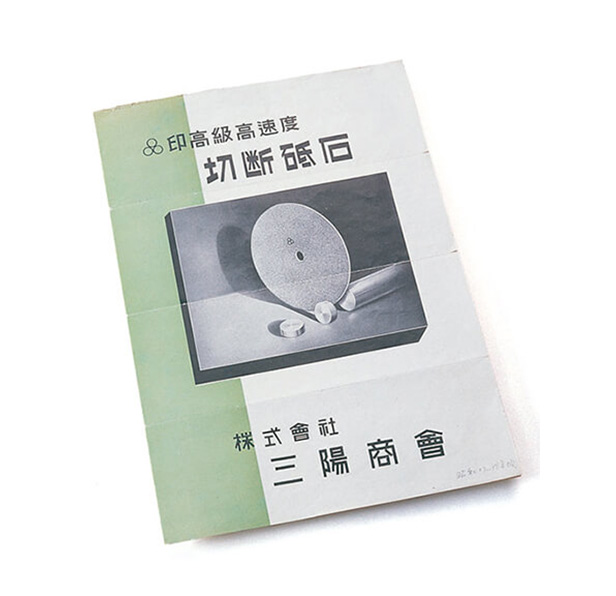
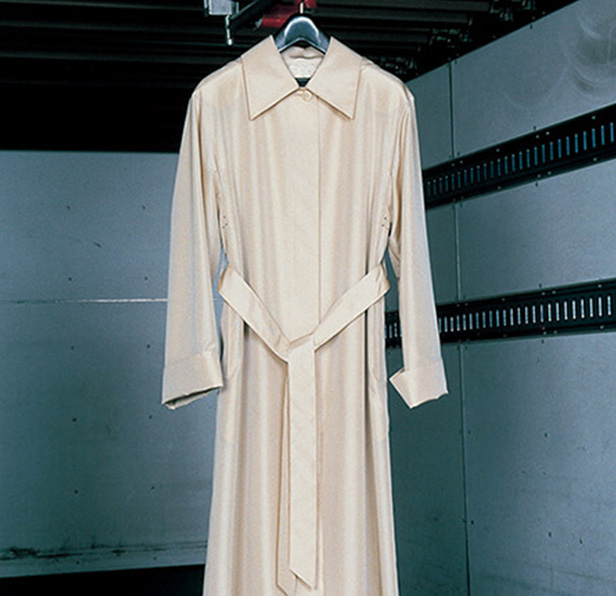
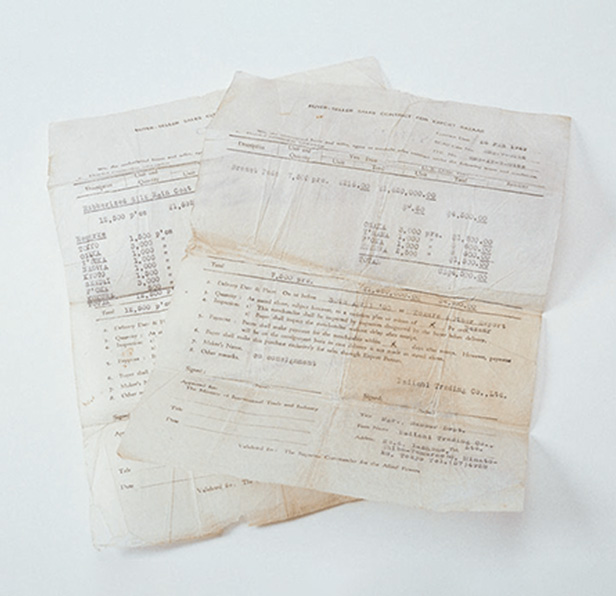
The 1950's
Progressing from specializing in raincoats to a fully integrated coat manufacturer
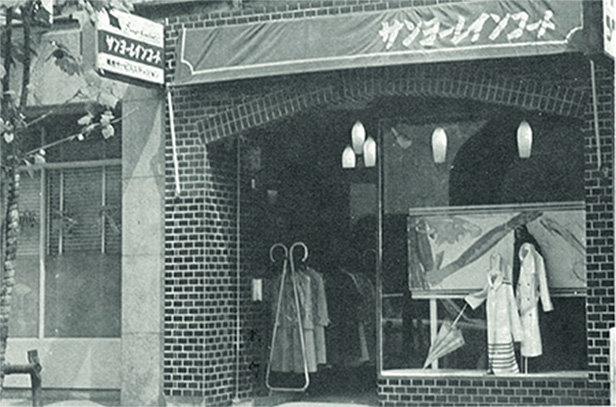
The production of raincoats for the Occupying Forces became an occasion for the company to build relationships with department stores and materials manufacturers that have provided sales floors for the company. An exclusive designer was appointed in 1950, said to be the first of its kind in the industry. Raincoats with unique designs were announced one after another, and full-scale production began. Raincoats that were once quite plain became stylistic. In 1951, the "Sanyo Raincoat" was registered as a trademark. The "Duster Coat," suitable for both clear and rainy weather, was released in 1953. It became a nationwide hit in 1955, progressing the company into a fully integrated coat manufacturer that sells year-round products. In addition, we focused on Cine-Mode fashion, where trends were born from Western movies. The "Red Raincoat" and "Sassard Coat" that became big hits were inspired by the coats worn by the leading actresses in the movies "The Eddy Duchin Story" and "Nata di Marzo".
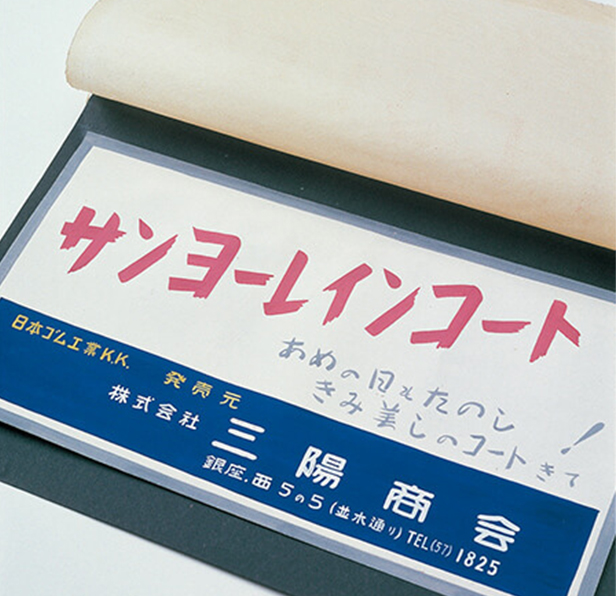
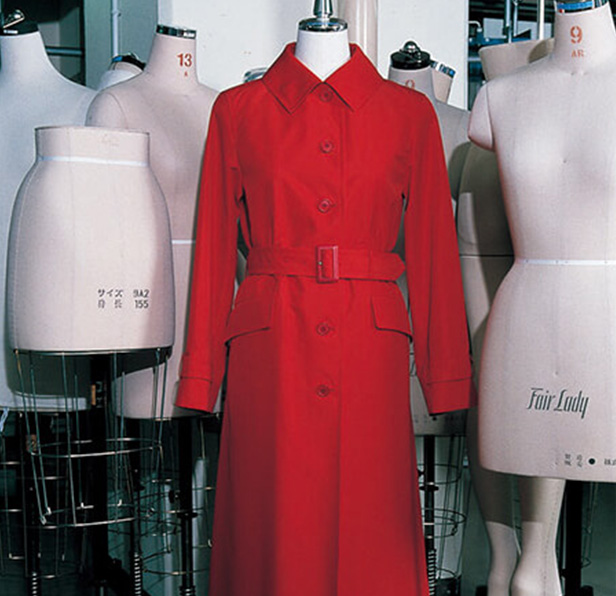
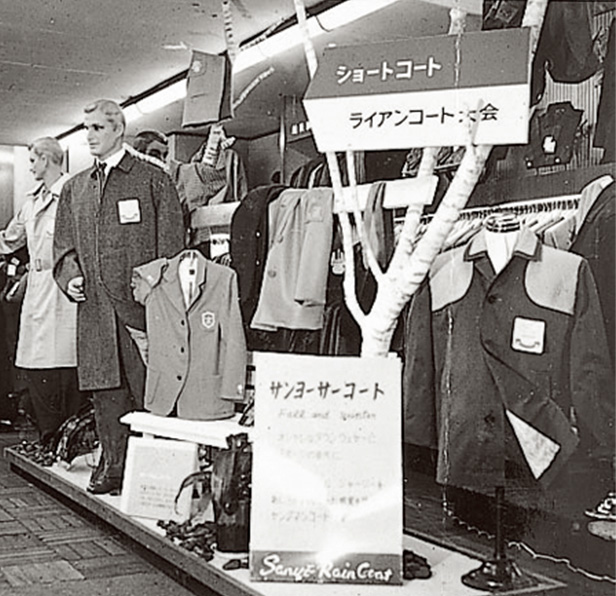
The 1960's
Technical department is established and a factory opens to strengthen production flow
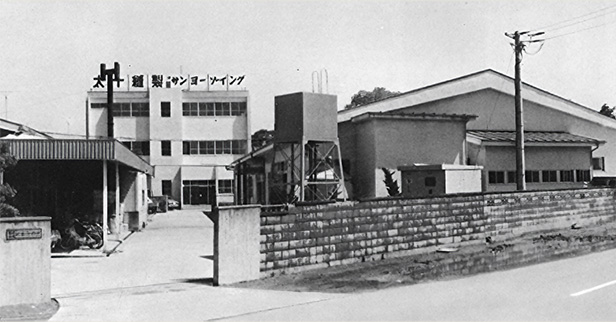
During the rapid economic growth of the 1960's, Sanyo Shokai established technical departments starting from a "Product Research Laboratory" in 1963, followed by a "Technical Laboratory" and a "Sewing Laboratory" in order to maintain quality even as the company expanded its range of coats and began mass production. A streamlined production system was established that was fully integrated within the company. Upon signing a contract with a prestigious overseas brand in 1969, "Sanyo Sewing" was established as the core of production, further improving quality and efficiency. At the same time, starting with the release of a women's ready-to-wear brand in the late 1960's, we began to advance from a coat manufacturer to a fully integrated apparel manufacturer. A new company building was established in Yotsuya in 1969, where our company's headquarters are currently located.
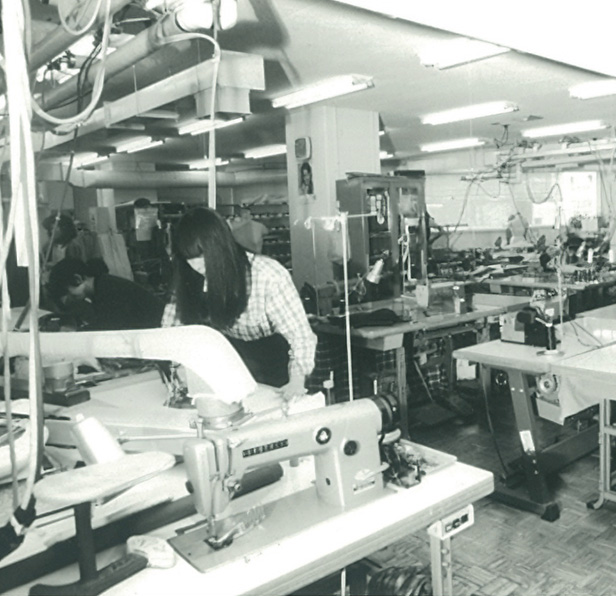
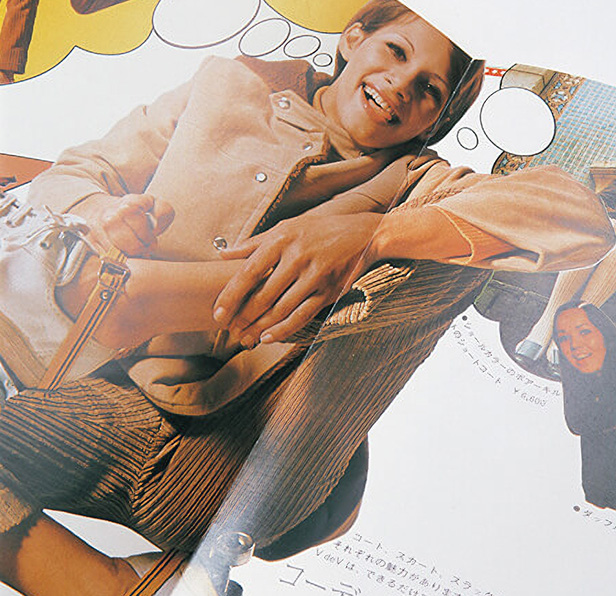
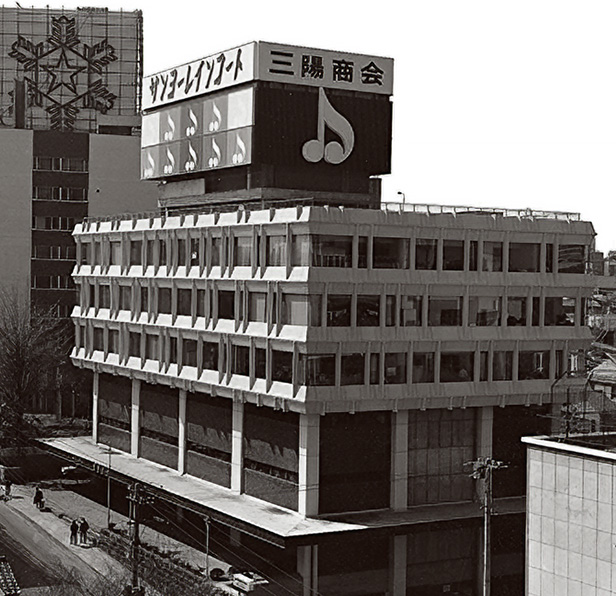
The 1970's
From a coat manufacturer to a fully integrated apparel manufacturer
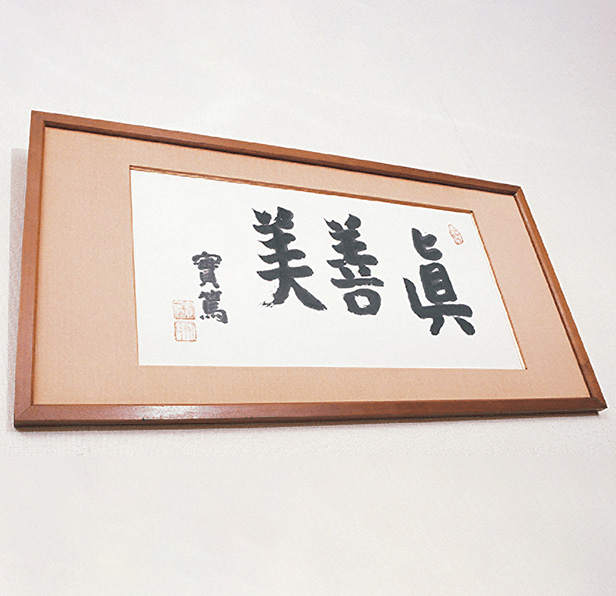
We expanded domestically through a series of partnerships with overseas brands in the 1970's, including "Burberry," "THE SCOTCH HOUSE," "Yves Saint Laurent," and "Pierre Cardin". We took on the challenge of introducing prestigious overseas ready-to-wear brands and mastered the techniques to create beautiful volumetric clothing. At the same time, we developed our own brands, such as "VOIR INTERNATIONAL," "VINVERT," and "Mr. SANYO," one after another to facilitate our market expansion. The company was listed on the Second Section of the Tokyo Stock Exchange in 1971, and as a company with more than several thousand employees, it has codified its corporate creed of "Truth, Goodness, and Beauty". These words express manufacturing, which remains at the core of the company and serves as a guidepost for employees. The company is listed on the First Section of the Tokyo Stock Exchange in 1977. In 1979, sales from coats were surpassed by sales from all other departments. We have established our foundation as a fully integrated apparel manufacturer both in name and reality.
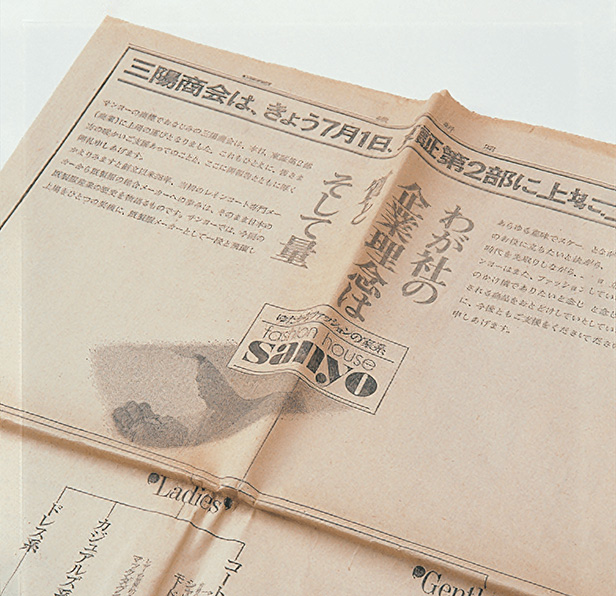
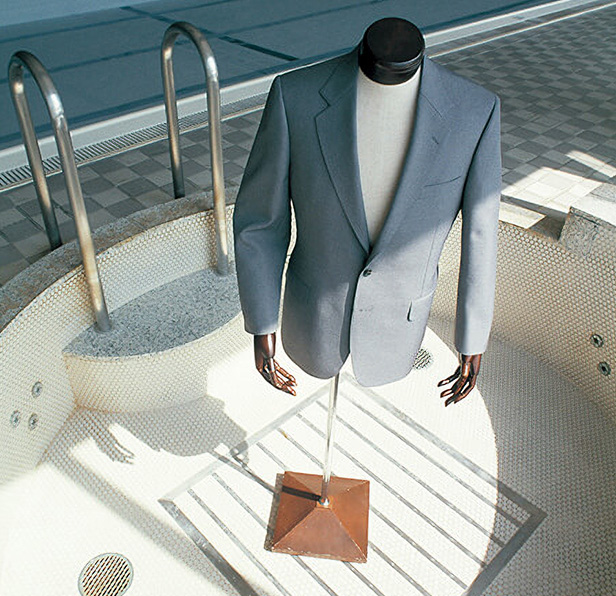
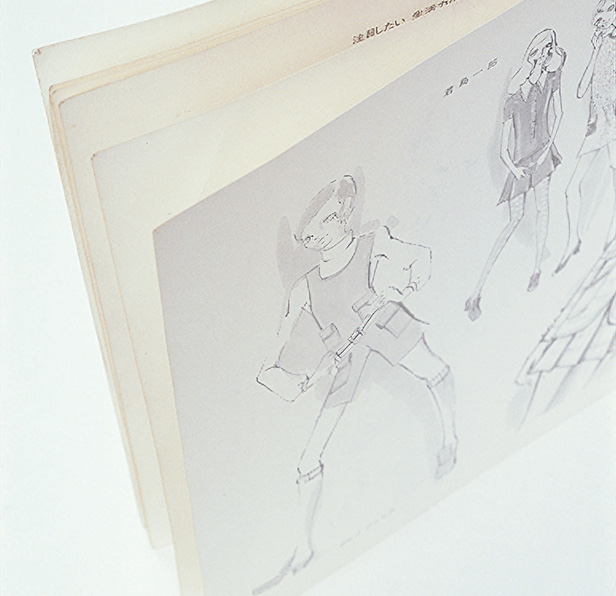
The 1980's
Embarking on overseas expansion
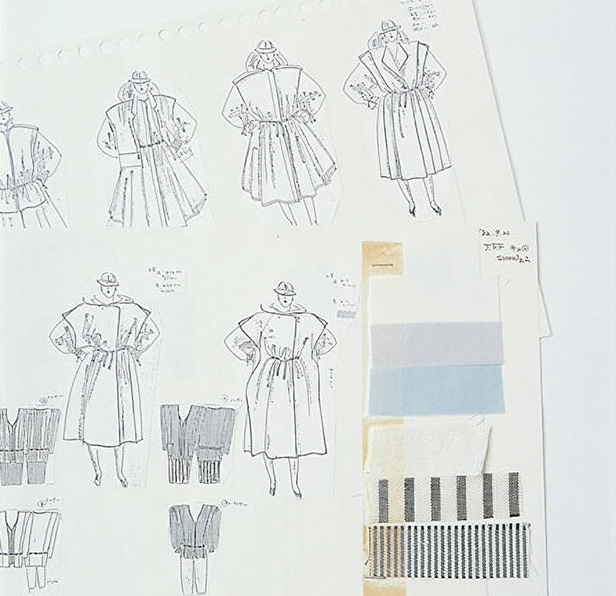
In the 1980's, we aimed to promote overseas business. We established a local subsidiary in New York in 1981 and began expanding overseas. Having established a full-fledged sales base in the United States, "Sanyo Sewing America (SSA)" was established in New York in 1987 as the first Japanese apparel company to operate its own factory in the United States. In an age when patterns were exchanged on paper, SSA and Yotsuya headquarters were the first in the world to send patterns electronically. A local subsidiary was established in Milan in 1988. We absorbed information from the city, which is the center of fashion, and applied it to our manufacturing. Back in Japan, not only did the company launch both original and overseas brands, but it also made efforts to improve the efficiency of logistics.
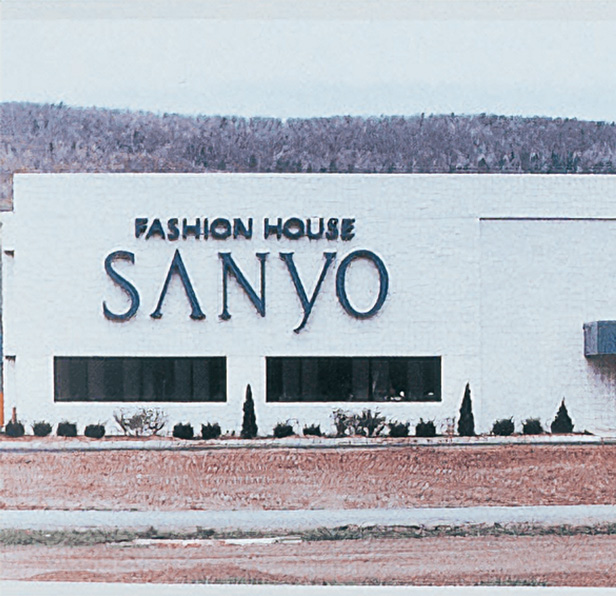
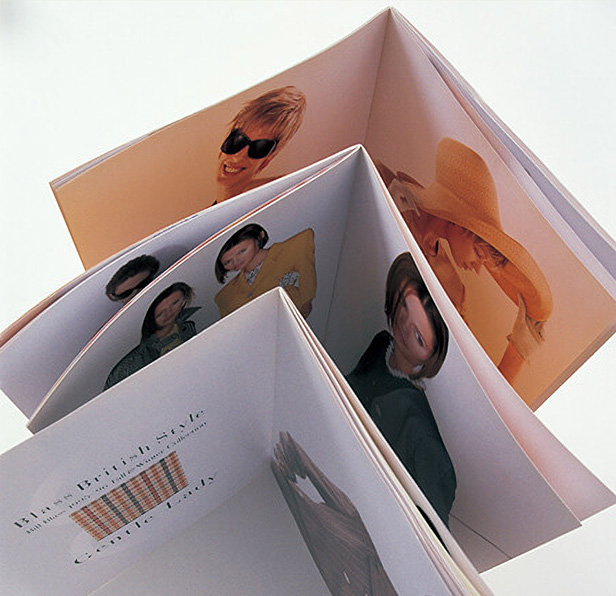
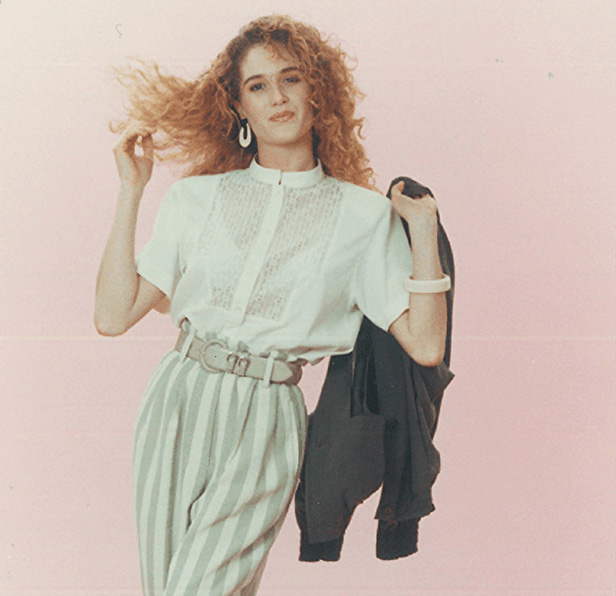
The 1990's
Promoting brand strategy
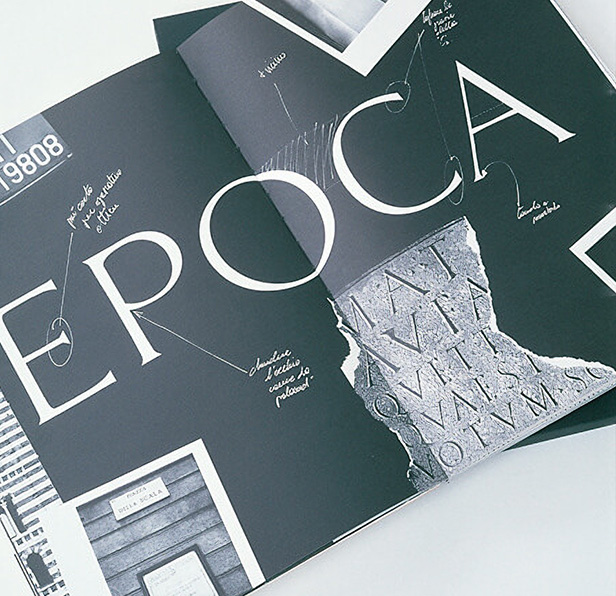
In the 1990's, we entered into a contract with Paul Stuart in the branding business, and in 1991 we began planning and selling the "Paul Stuart" brand in Japan. "EVEX by KRIZIA" was launched in 1994, and the brand "EPOCA" in 1996 with the aim of becoming an international brand that is accepted around the world. In 1997, "EPOCA the Shop" opened in Aoyama in Tokyo as Sanyo Shokai's first select shop. Brand strategy is promoted further. Overseas production is actively promoted on the production front. We expanded our production bases in such places as Shanghai and Bangkok and proceeded with the creation of a strategic position for domestic and overseas production.
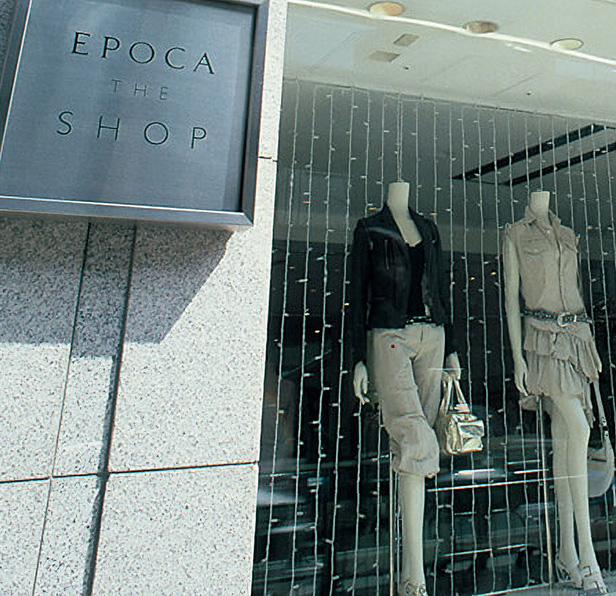
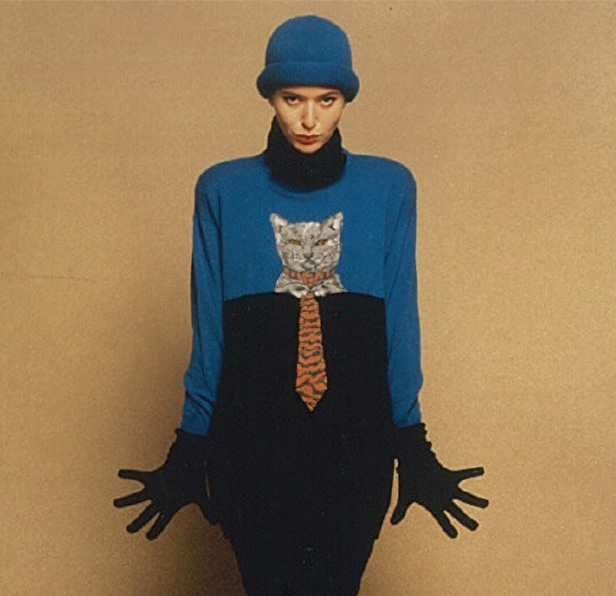
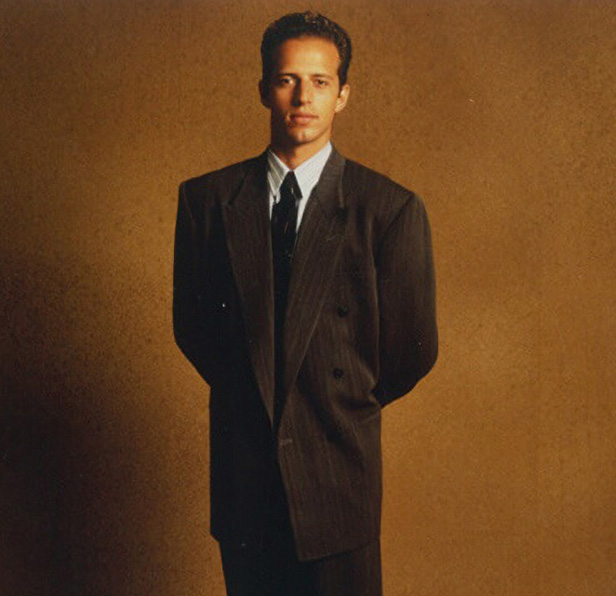
The 2000's
Number of brands increases and e-commerce business begins
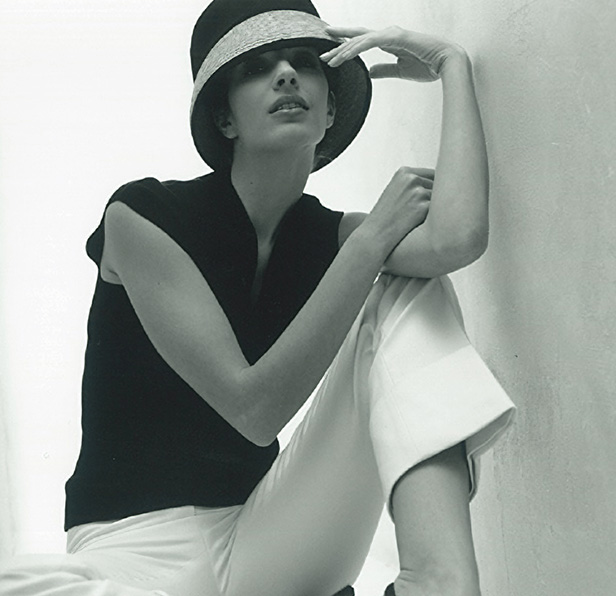
Amid changes such as globalization and computerization in the 2000's, we formulated a five-year medium-term management plan in 2001. While there are few companies in the apparel industry that have medium- to long-term management plans, we announced our stance on corporate governance both domestically and internationally. In the branding business, we launched men's shoe brand "SANYO YAMACHO," followed by brands "TO BE CHIC," "AMACA," "EPOCA UOMO," and "MACKINTOSH PHILOSOPHY".
We opened our first new age select shop, "LOVELESS," in 2004. We launched our directly managed online store, "Sanyo iStore," in September 2008, which kicked off our e-commerce business. The same year, we opened the East Japan Product Center in Ichikawa City, Chiba Prefecture, as a logistics base. We tidied up our business foundation by consolidating all logistics operations into one location.
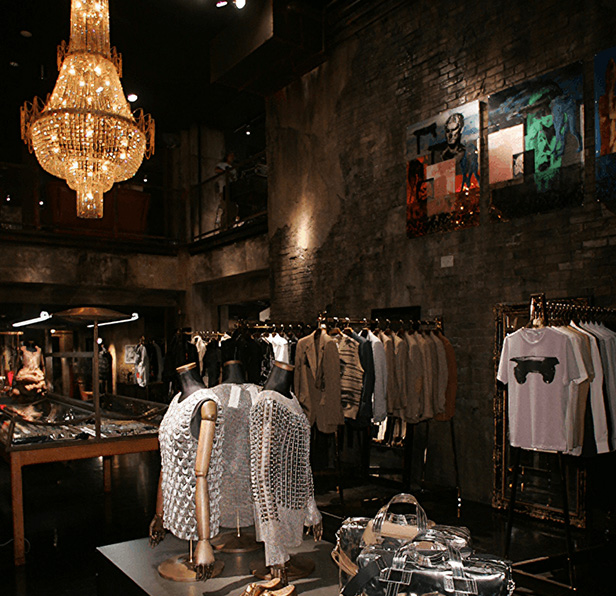
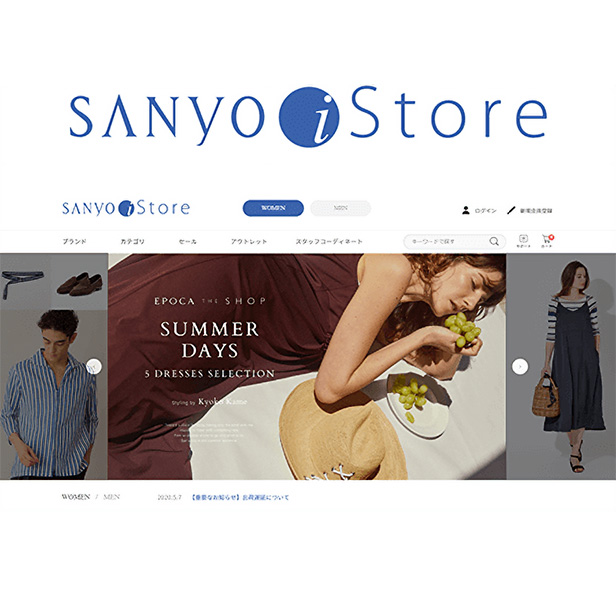
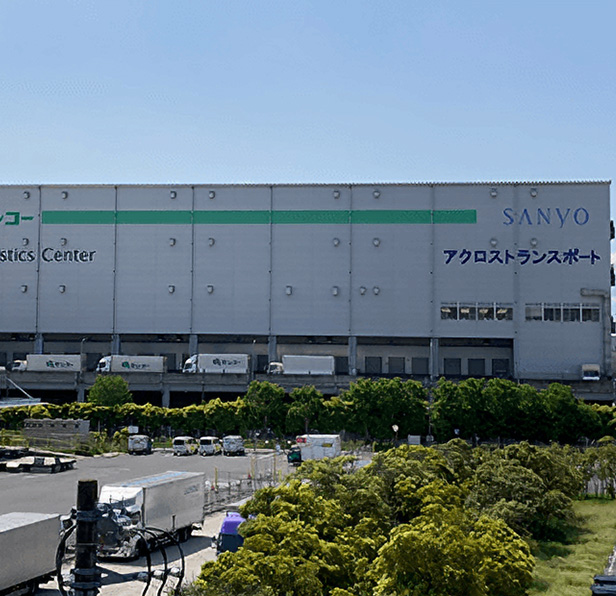
2010-2022
Formulation of corporate tagline

As fashion continues to diversify, to become a company that resonates with and is loved by consumers, we formulated the corporate tagline "TIMELESS WORK. Let's make truly good things" in 2013, the 70th anniversary of our founding. As a symbol of this corporate tagline, we launched the "100 Year Coat", which aims to be "A product that transcends generations and can be used for a long time".
In the branding business, we launched the key brands "MACKINTOSH LONDON," "BLUE LABEL CRESTBRIDGE,"' and "BLACK LABEL CRESTBRIDGE" in 2015.
As values continue to change due to factors such as increasing awareness of the Sustainable Development Goals and the spread of the COVID-19 pandemic in the 2020's, we started domestic sales of the Spanish sustainable fashion brand "ECOALF" in 2020.
We will continue to promote our business based on our corporate philosophy, "We create social value by providing fashion and apparel that enrich the lifestyles of customers everywhere".
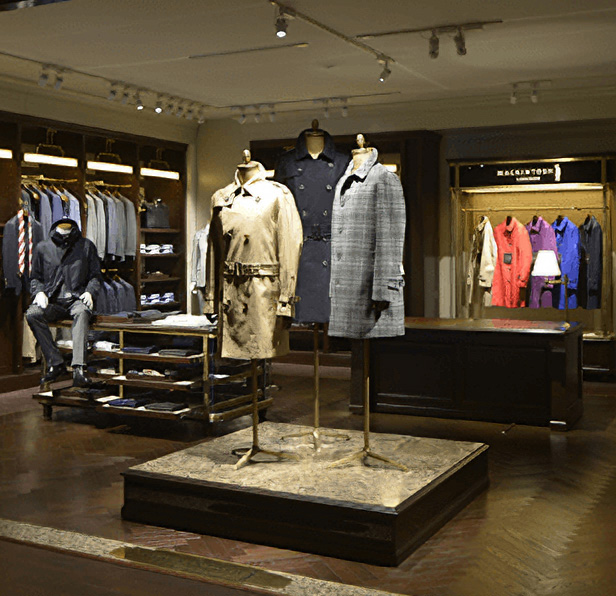
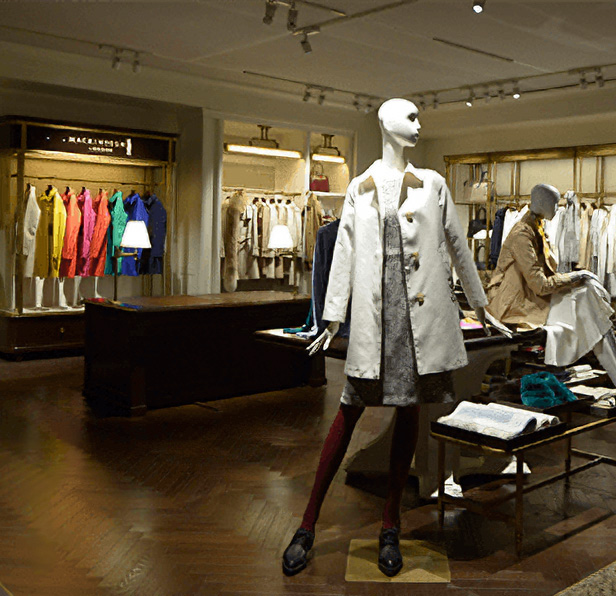

Changes in our corporate logo
Sanyo Shokai was the first Japanese apparel manufacturer to attach woven labels and tags to its products,
and was conscious of its corporate identity from an early stage.

First logo
The first logo, "Sanyo Coat," was used as the woven name and corporate logo to spread the corporate identity of "Sanyo of the coats".

2nd generation(1971)
In 1971, the logo was renewed in line with the company's next goal of becoming a fully integrated apparel company.
It will be written as "Fashion House Sanyo".
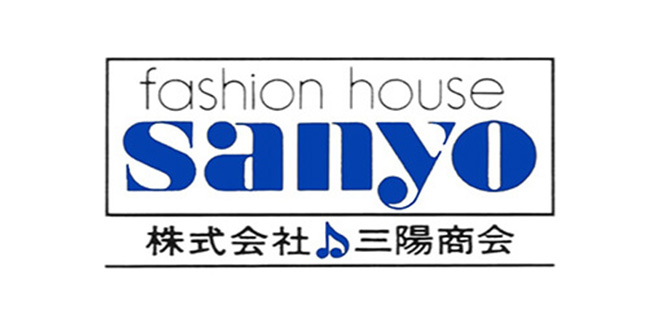
3rd generation(late 1971-1984)
The musical note-like "raindrop mark" in front of the company name is based on the S in SANYO.
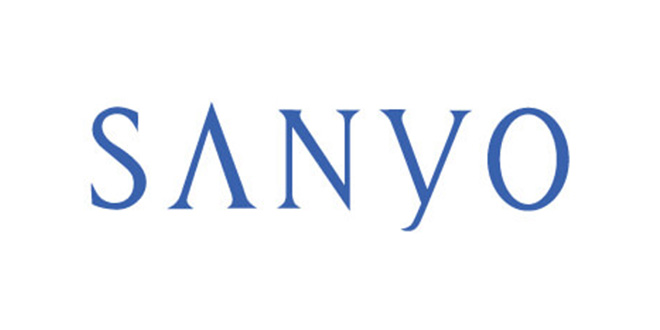
4th generation(1985-present)
The current corporate logo, used since 1985, symbolizes Sanyo Shokai which aims to be stylish, high-quality, and international in the 21st century.
